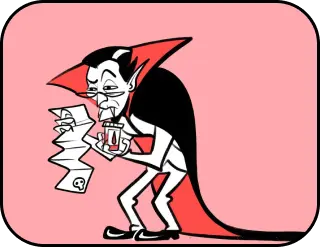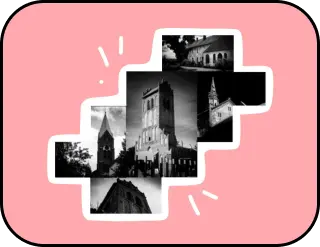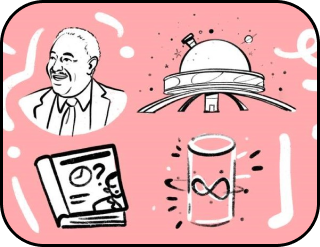The scientific past of mythical creatures: witches, vampires, and werewolves
One autumn evening, when the lazy moon decided to share its light with the heavenly water, all the Halloween heroes gathered in a mysterious forest. The heroes arrived where, among the evergreens and thick fog, strange rustling could be heard, and the distinct gleam of glowing eyes could be seen.
Witches, wizards, mermaids, and vampires merged into a singular entity, imbuing this special evening with an air of enchanting magic. The witches busied themselves around a colossal cauldron, from which sweet, intoxicating wisps of smoke spiralled into the night. The wizards and mermaids added enigmatic ingredients to the brew, murmuring incantations to summon spirits and invoke the powers of darkness. The vampires, returning from their nocturnal hunt, regaled the gathering with tales of their abilities to command the elements, foresee the future, and weave spells of wonder.
In the age of advanced technology, it seems somewhat uncommon to believe in mysticism and mythical creatures. Yet each of us has, at one time or another, eagerly read fairy tales and vivid legends about both wicked and benevolent monsters, often without considering that every supernatural phenomenon has its own simple, albeit strange, scientific explanation.
Today, on the eve of Halloween, we have a unique opportunity to set aside all superstitions and delve into the historical origins of each mythical creature.
Not a witch’s brew, but Pervitin
Distinguishing Features: One of the most important devices of witchcraft, alongside the broomstick, the Spell-book, or the magic wand. The individual who wielded the cauldron needed to possess deep knowledge, have the ability to heal, commune mystically with otherworldly forces, and provide hope for recovery.
To witness a witch’s brew, you must delve into the dark depths of medieval Europe, where magic and superstition prevailed over reason.
These were the dark and ominous times when wheat was scarce, and rye was the main source of survival. It was during this period that the entire European continent was struck…no, not by a sinister conspiracy, but by a mysterious parasitic fungus known as ergot, which subsequently wreaked havoc on people’s minds. The menacing fungus began infecting rye, turning it into black, sinister grains that, when consumed, caused real hallucinations and bouts of madness.
Then, ominous dead walked the streets, who, after partaking of the cakes made from the fungus-infested grain, would truly fall into an unconscious state for a time, only to then wander the streets, terrifying passersby with their vacant gaze.
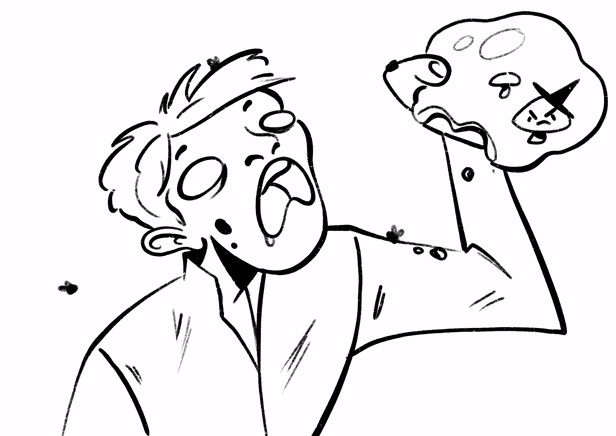
Medieval peasants, seized with horror, were forced to watch as their neighbours began to writhe in agony, covered in ulcers, and then completely turned black, as if seized by some devilish force. The peasants attributed it all to the machinations of witches and sorcerers: how else in the Middle Ages could such a terrible phenomenon be explained.
How could they know that their entire life had been turned upside down by one small, insidious fungus, which may have been the progenitor of the legendary drug LSD? Several centuries would pass before a group of brave medieval “chemists” would learn to extract hallucinogenic substances from ergot and smear them on brooms to organize real “raves” in the forest, where naked people, under the influence of these “potions”, would jump and spin, sincerely believing that they were communicating with Satan himself!
Not witches, but representatives of science with the pure and bright soul of a newborn
Distinguishing Features: Every woman with deep, expressive eyes, in which the longing for an unattainable feminine dream is reflected.
Long ago, long before these lands embraced Christianity, there lived incredible women. They were true enchantresses, knowing all the secrets of nature! Witches and wise women could perform wonders: healing with herbs, communicating with animals, and even controlling the forces of the elements.
They skilfully gathered rare plants in the forest, humming mysterious songs, and then brewed potions from them that helped everyone who came asked for them. The villagers treated the witches with awe and respect, for these women were true guardians of ancient knowledge. And suddenly, these wise Sorceresses fell from grace! Their abilities were declared ‘satanic,’ and many of them were burned at the stake as villains.
What did they do to displease the medieval Inquisition? Why were they feared and persecuted?
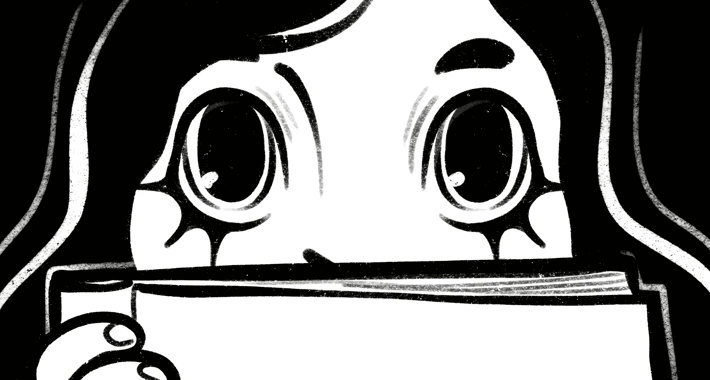
Overall, the entire history of witches is connected to the history of all women who have risked — and still risk — falling into the disfavour of society simply for the fact of their birth. Green eyes? Then she must be a witch. Knows more than a girl should? A witch. Interested in reading books? Are you still in doubt? Definitely a witch.
Too intelligent, too wise, too attractive. Witches didn’t even have to cast spells or recite incantations to end up in the cauldron. Even in the Bible, nothing directly links ‘witches’ to any kind of satanic cult. Unlike ordinary women, witches were emotionally and intellectually flexible, unpredictable in their habits and relationships. And their only fault was that they were very different from society’s established idea of the average woman.
Nevertheless, historians and neurobiologists who have studied medieval torture have come to the conclusion that there were indeed women whose hormonal systems and intellect functioned in a unique way. These women, often branded as witches, exhibit heightened activity in certain regions of the brain, generating a powerful energy field around them. They possess a keen observance and resourcefulness, and an unmistakable aura of attraction seems to envelop them, emanating from aphrodisiacs — hormones that evoke an intensified sense of desire.
Such women are attractive to the opposite sex, as intimacy with them occurs on higher energetic levels. It is no wonder that in the Middle Ages, witches instilled terror in monks starved for carnal pleasures. Their independent spirit and trained minds frightened the primitive consciousness of the common people, leading to their ruthless sentencing to death. According to ancient beliefs, people were advised to cover their eyes to avoid falling under the influence of a witch.
In history and in literary works, the image of the witch lacks a clear description; they were often labeled as heretics. However, there is one historical document — the Malleus Maleficarum — that explains why the hunt was primarily directed at women: ‘…a greater number of witches are found among the fragile female sex than among men; this is indeed a fact that makes no sense to contradict, as it is supported by actual experience, in addition to the testimonies of trustworthy witnesses… all witchcraft arises from carnal lust, which is insatiable in women… Therefore, in pursuit of satisfying their desires, they even consort with devils.
Perhaps there are indeed special women living somewhere near us, possessing an incredible gift that can make anyone who notices them tremble. They are loved and equally despised. Yet, if one dares to look into the eyes of such a woman, one can see a vast blooming garden and an incredible longing for an unattainable feminine dream — one that ordinary mortals cannot endure.
Not sorcerers, but erudite professors
Distinguishing Features: Sorcerers can heal with a touch or a spell. They are true psychophysiotherapists who use the power of their consciousness and physical methods to help people. Bioenergetic therapists who can sense a person’s energy and work with their ‘astral body.’
“…On the edge of the village stands a solitary house where Harold, the local sorcerer, lives. He sits by the fire, deep in thought. His wrinkled face is illuminated by the flickering flames, and glimmers of magic dance in his eyes. Harold is not an ordinary village healer, no. He possesses truly unique abilities. His energy perception is so heightened that he can instantly read the thoughts and emotions of those around him. And not only that, his will can influence others, be it for healing or causing harm. Harold himself is unaware of the magnitude of his power. One careless wish, one outburst of anger — and someone’s fate changes forever. The sorcerer sighs heavily and reaches for his old wooden cane. He senses that someone is approaching his domain. Whoever it is, Harold is ready to welcome the guest. His hands grip his cane tightly, and his eyes narrow, focusing on the sensation of another’s presence. What awaits the uninvited guest in this mystical forest? Perhaps healing, or, on the contrary, something sinister…”
It is hardly possible to attribute the existence of an unyielding belief in witches and witchcraft across all times and cultures to mere coincidence. Is it not because this belief has survived not so much due to superstition, but rather because it is rooted in knowledge based on the life experiences of all humanity?
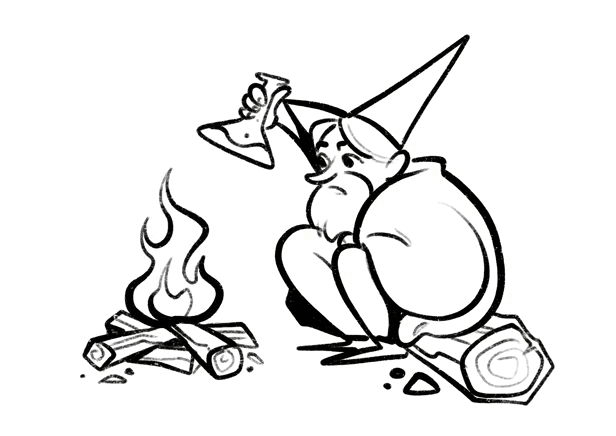
Sorcerers are considered to be masters of secret knowledge and are capable of manipulating people’s destinies by penetrating the energy-informational structure of a person. In the past, people who were unaware of the existence of penicillin often regarded their healing as a miracle and attributed magical qualities to the pharmacist. Scholars in folklore, ethnologists, and experts in philological and historical sciences provide the following definition of a ‘sorcerer’: ‘These individuals have the ability to influence another person on an energy-informational level. They typically possess bioenergetic abilities, heightened sensory perception, and a solid understanding of traditional medical practices. Thus, a sorcerer truly proves to be the most powerful and knowledgeable healer among other representatives of the magic-medical profession.’
The sorcerer’s bad reputation can be caused by the fact that he can instantly realize his superpowers both in ethically positive and ethically negative, immoral situations. Such a person, often driven by a momentary impulse, can almost accidentally harm others by wishing them evil, which then, regardless of his desire, comes true. Only the sorcerer himself or a more powerful magician-healer can eliminate the consequences of such accidental interference.
Although sorcerers firmly established themselves as the first ‘chemists’ in the village, people often turned to them for simple everyday advice. When the advice worked, faith in the sorcerer’s powers was strengthened. When the advice didn’t work, the sorcerer always had a phrase ready: ‘Well… this turned out to be more complicated than I thought.
Not mermaids, but masters of optical illusions
Distinguishing Features: Women with sea-coloured eyes, loose blonde hair, a gentle voice, and a fish tail instead of legs. A deceased woman who died an unclean death and does not have peace in the afterlife. A harmful spirit appearing by the water, capable of tickling a person to death or drowning them.
“…The mermaids gathered by the water, their voices filling the forest with a mystical resonance. Enchanting songs lured travellers into their snares, while the beautiful eyes of the young maidens glittered like precious gemstones. The mermaids enticed the lost souls of sailors, seeking to augment their magical power…”
The captivating images of mermaids, or as they are commonly referred to, “sea maidens,” have stirred the imagination not only of sailors. Almost every culture has a legend about the lost soul of a young girl who, in despair, threw herself into the sea and found eternal immortality in the form of a mermaid.
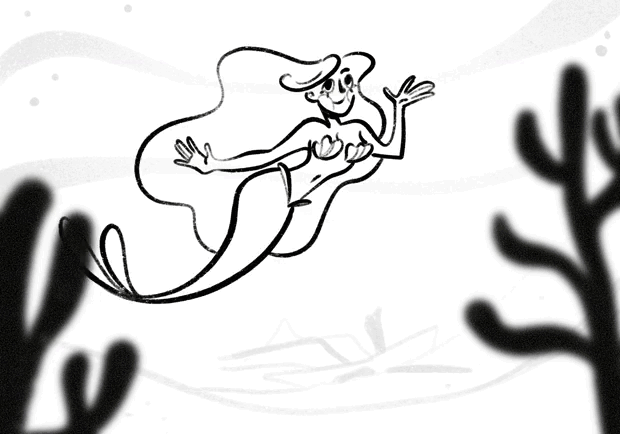
The image of the mermaid was glorified in the work “Undine” by Friedrich de la Motte Fouqué, while Hans Christian Andersen paid tribute to the mermaid who wished to gain a human soul. The image of the young sea maiden is also reflected in the eponymous drama by Alexander Pushkin.
Even in our time, sailors who miraculously survived shipwrecks spoke of a wonderful girl with a fishtail who helped them rise to the surface from the water. Moreover, all the fishermen described the features of the girl who saved them in exactly the same way.
Scientists in the field of medicine connect the phenomenon of mermaids with what happens when a drowning person is struggling to breathe. In this critical moment, they may reflexively tilt their head back, causing all the objects above the water to blur together, creating the illusion of a beautiful girl.
Optical scientists explain the appearance of mermaids as a result of light refraction, pointing out that the most common explanation is mirages, which are not mystical at all. For example, during hot weather, it can look like there are puddles on the asphalt, but as you get closer, they disappear — these are called lower mirages, and there are also lateral mirages. These effects are often seen in places with steep cliffs and walls. Because of this, scientists believe that sightings of ghosts near castles and mermaids near large ships can also be explained by mirages.
Biologists assert that a mermaid could very well be a genderless being. The diversity of sexual behaviour in fish, if a mermaid is indeed half-fish, is much greater than in humans. Discussing the sexual behaviour of fish as a whole is complex, as each species has its own unique patterns. Even the sex of fish is determined in various ways, for example, depending on body temperature. Under the influence of hormones, some fish species can change sex during their lifetime, developing new reproductive organs. Additionally, fish can also change their sexual orientation, and this can be triggered simply by the scent of the amino acid methionine.
Not lamias, vampires and the living dead, but discerning hematologists
Distinguishing Features: A living being, a half-dead creature, a dead person who leads a nocturnal lifestyle, sucking blood from humans and causing nightmares. These are entities that once had unfortunate biographies: “unclean” corpses, criminals, suicides, those who died an untimely death, or those infected by the bites of other blood-sucking brethren.
“…Vampires lurked in the darkness, gliding across the ground like shadows. They thirsted for blood and life, their sharp fangs gleaming in the moonlight, ready to bite their prey and become an eternal nightmare. They drank blood to stay forever young and strong, and their eyes sparkled with a scarlet fire, full of thirst and passion.”
Yes, vampires do exist to this day, although not in the form in which they are usually portrayed. Some people truly suffer from a rare genetic condition that makes them sensitive to sunlight, craving blood and possessing supernatural strength.
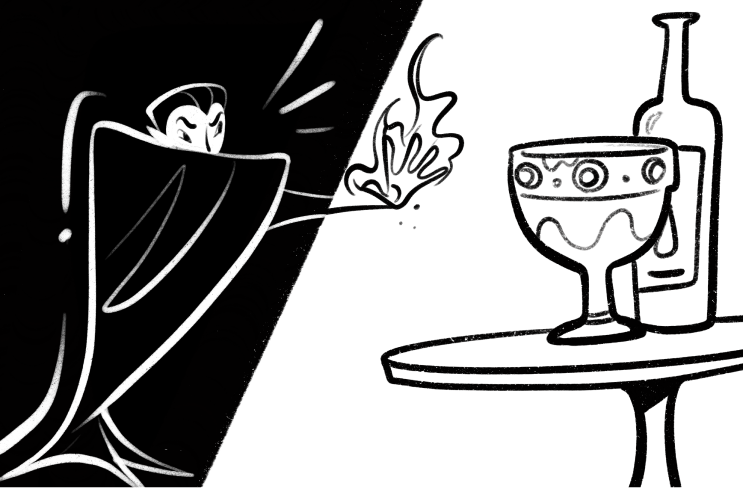
When mentioning Dracula, images from the 1931 film of the same name featuring actor Bela Lugosi in the lead role come to mind. However, for some people, Dracula is primarily associated with Vlad the Impaler — the ruler of the principality of Wallachia. He is believed to have been a very cruel man who executed around 80,000 people.
Vlad the Impaler, as historians describe him, was a true monster who reveled in the torture and killing of his subjects. In his personal letters, the ruler described a strange illness that caused him to weep bloody tears. There is no evidence that Vlad the Impaler was actually a vampire who drank the blood of his victims, nor is there proof of the authenticity of such letters. However, considering the maniacal cruelty of the ruler, it is quite plausible to suggest that after each execution of his subjects, “bloody boys” visited him at night, which in modern terms could be referred to as “torments of conscience.”
However, if immortal blood hunters do exist, their bodies must face a whole range of deadly dangers: excess iron, salt, infections — all of these pose the most terrible ailments to them. The descendants of Count Dracula suffer from hemochromatosis, the accumulation of iron in the organs and tissues of the body, which is accompanied by weakness, heart failure, fluid buildup in the lungs, hypertension, and dehydration.
Even those who drink blood moderately, such as the Maasai tribes of Africa, who regularly consume the blood of their animals, are not immune to the consequences: diarrhea and vomiting are the most common price paid for their ominous rituals.
The protein found in a person’s own blood helps accelerate the healing process of wounds, but in such therapy, blood is administered via injections rather than through a straw like tomato juice.
So, is it worth romanticising these pale, emaciated creatures? Perhaps the truth about them is far more terrifying than any fiction, and they are doomed to wander endlessly in search of blood, condemned to suffer from diseases and endless torment.
Our ancestors tried to combat vampires and the undead in interesting ways. When the evil spirits rampaged in search of new victims, scattered poppy seeds were believed to help protect against them. It is hard to imagine the face of a vampire who was just about to have a snack, and then – poppy: it gets stuck in the fangs, then you can’t clean it out. Did he really have to cancel the meal!?
Not Zombies, but neurophysiologists of the past
Distinguishing Features: Reanimated corpses brought back to life by some fantastic means, submissively obeying someone else’s commands. They are characterised by mad eyes or the absence of eyes, a swaying gait, an eternal hunger, a thirst for living flesh, and a love for the intellect of living people: ‘Brains! Brains! Brains!'”
“…A deserted street in the night city. Silence presses on the ears, and the shadows cast by the streetlights seem like living creatures ready to pounce at any moment. In the distance, a moving figure comes into view, swaying from side to side like a ragdoll in the wind. It is no longer a human, but an infected possessed being. Its gaze is frozen, as if made of glass, and foam spills from its mouth. The jaw hangs slack, revealing fangs. The figure approaches slowly but surely, driven by a single desire — to infect a new victim. And the legs of the inattentive passerby betrayingly weaken because of the fear…”
American writer, traveler, and occultist William Seabrook first described zombies in his 1929 book ‘The Magic Island.’ In this book, the protagonist-narrator, while in Haiti, witnesses a person being transformed into a zombie through a voodoo ritual.
In fictional works, there are two types of zombies: those infected by a terrible zombie virus or infections transmitted through bites or drops of blood. The viruses supposedly slow down decomposition and reactivate the brain after death, turning the infected individual into a predatory and aggressive being. The other type of zombie consists of sluggish, soulless corpses brought back to life by black magic.
In films and literature, alongside horror stories about zombies, a new genre has emerged — the zombie apocalypse. These thrilling narratives depict how human civilisation battles against the relentless invasion of zombies or strives to protect itself from the suddenly revived dead. The primary weapon of zombies in catastrophic scenarios is their overwhelming numbers and their peculiar ability to emerge only in areas with large crowds of people.
Is a zombie apocalypse possible? Experts in the field of medicine explain that viruses cannot reproduce on their own; they require a living cell for that, and dead zombie bodies are completely unsuitable for reproduction, making the spread of infection impossible. Furthermore, natural barriers would hinder a zombie invasion — rivers, mountains, sunlight, and even animals, including a household cat.

Do zombies exist? To this question, all scientists give a definite answer: ‘Zombies are merely a fictional creation designed to thrill.’ When a person dies, blood circulation stops, and all organs begin to deteriorate. Even for transplantation, under special conditions, only about 20% of organs remain viable. After brain death, no system of the complex human organism can function, and the body becomes defenceless due to the inactivity of the immune system. Muscles do not receive nourishment and cannot perform motor functions, and none of the senses can function. Zombies, in essence, represent decaying flesh that could not survive even a minute under normal earthly conditions. It would decompose from the scorching sun, frost, wind, rain, and snowstorms.
Zombies are an eternal theme for all sorts of creepy and amusing stories, and this is sometimes used by special agencies to awaken public interest in pressing issues. In 2011, the American Centers for Disease Control and Prevention (CDC) issued a humorous survival guide for a zombie apocalypse. Usually, it is difficult to get people to respond to calls to prepare for potential disasters, but such a guide sparked extreme public interest.
In 2014, even the Pentagon took advantage of the popularity of the zombie apocalypse theme to engagingly present a dry subject. The military developed a plan to counter attacks from not just an imaginary enemy, but zombies (the unclassified document CONOP 8888). The document seriously characterised the enemy forces as several types of zombies: pathogenic, radiological, necromantic, extraterrestrial, and combat zombies. Special attention was given to evacuation plans. The document was presented as a teaching aid for educational purposes or internal exercises based on a fictional scenario.
However, if we set aside all the mysticism and magic, there are indeed creatures in the real world that fulfil the role of “social” zombies. Psychologists describe people who are alienated from society but still try to conform to it.
Not werewolves, but representatives of advanced biology education
Distinguishing Features: A fearsome creature resembling a humanoid wolf, as it moves on two legs. Completely covered in fur, it possesses superhuman abilities and incredible strength. It has a terrifying, malevolent appearance and enormous fangs. During the full moon, it reluctantly transforms into a large, intimidating, and extremely hostile wolf.
“…A peaceful village, lost among the intersections of numerous highways. The loud barking of village dogs is replaced by soft rustling sounds, and the evening air is filled with the scent of freshly cut hay. But when the full moon rises and the sky is cloaked in the mantle of night, the world begins to change. Silvery rays of the moon pierce through the clouds, and at that very moment, tension fills the air. Everything around comes to life, and mysterious sounds echo from everywhere. When a shadow appears with each rising moon, livestock and even people begin to disappear from the village, and a terrible fear grips the hearts of the villagers…”
Werewolves and wolf-men have become part of legends and a real force that unites the peaceful human nature and desperate wolf nature.
One of the oldest chronicles about werewolves dates back to ancient Greek mythology, which tells of magicians from Scythia who used a mysterious potion to transform into wolves. According to legend, King Lycaon was turned into a wolf by the god Zeus himself for murdering and eating his own son.
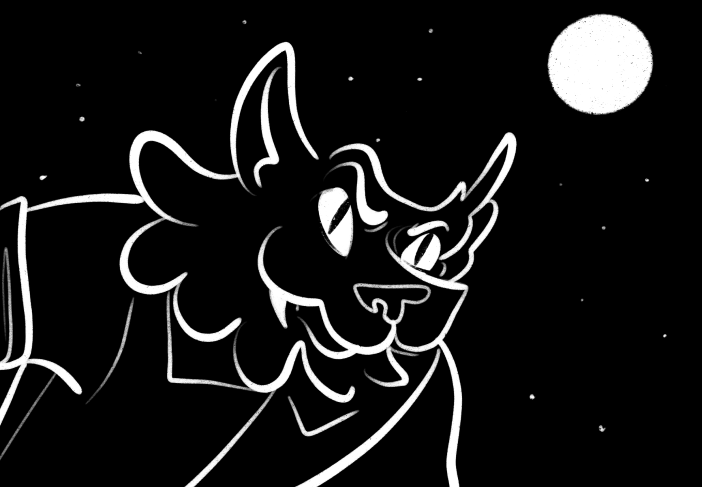
In the Middle Ages, Europeans loved to thrill themselves with creepy stories, and werewolves held a prominent place in their conversations. One of the most captivating incidents occurred in 1521 in Germany, in the town of Kulmbach — a place where real battles took place not only in the fields but also in the city alleys filled with whispers and fear.
The events unfolded when local residents began finding the bodies of their neighbours with clear signs of attacks, indicating that some wild beasts were leaving their ‘calling cards’ on the victims’ bodies. The townspeople, filled with fear, began to speak of werewolves appearing in their region. The hunt for these mythical creatures escalated to such an extent that people started to avoid even their own relatives.
Tragedy was not absent either. A couple of unfortunate individuals were accused of forgetting their human nature — they were executed amidst the fierce whispers of the townsfolk.
An integral part of many myths is also the mysterious potion capable of transforming a person into a werewolf. But, alas, the world of science has yet to confirm the existence of such a magical elixir. However, there is a sea of theories, ranging from genetic mutations to physical anomalies, such as hypertrichosis, where a person is covered in hair as if they stepped straight out of a fairy tale.
Science does shed light on the darkest secrets of the past. Most scientists believe that it all comes down to psychological disorders that make people think they are animals, but no physical transformations occur. These unfortunate individuals may feel as if they are in a cage and suddenly begin to perceive themselves in the guise of fierce beasts. Medical science widely describes a condition known as lycanthropy—a psychological state in which a person begins to believe they are a wolf. People in this state start to relate to themselves as animals and behave accordingly: they climb walls, scratch with their nails, and may even attack others.
Additionally, in the 1970s, werewolves were given a rather concrete medical explanation. After studying mountains of documents and around 80 confirmed cases, Dr. Lee Illis reached astonishing conclusions: most of the so-called ‘werewolves’ of the past actually suffered from a rare genetic disease — porphyria. This explains both their beastly appearance and their violent madness!
Porphyria causes extreme sensitivity to light in patients. The skin becomes covered with inflammations, ulcers, and spots — leading to the necrosis of tissue in the nose, ears, and fingers. The teeth take on a sinister reddish-brown hue. The psyche of the sufferers gradually deteriorates, ranging from hysteria to manic-depressive psychosis.
It is not surprising that in the Middle Ages, such unfortunate individuals, who hid from the sun and only ventured out of their homes at night, were taken for werewolves, and their distorted facial features and long, unkempt beards fit the horrifying descriptions of ‘shape-shifters.’
In truth, this condition is extremely rare. However, Dr. Illis convincingly demonstrated that it was this ailment that served as the foundation for legends about wolf-men.
There is also a theory from the realm of parapsychology. It is possible that alongside our world exists an astral realm, and werewolves emerge from there through transmutation. Any person can transform into an animal through a magical ritual, penetrating through astral passages.
Regardless of whether they are myths or reality, stories about werewolves remain a vivid part of the cultures of many peoples and continue to captivate the imagination. They inspire writers, artists, and directors to create new stories and images, awakening interest in this mysterious phenomenon. Ultimately, legends about mutants help us to look at ourselves from the outside, revealing our own inner demons.
In a world where science and magic intertwine, witches, vampires, werewolves, and other fantastical creatures still claim to exist alongside ordinary people. They hide their powers and abilities from prying eyes and emerge with the onset of night, when the silver moon appears in the sky, exposing inner fears and internal demons.
Your thought is a big bang of ideas. Our journal is its source.
Thank you!


